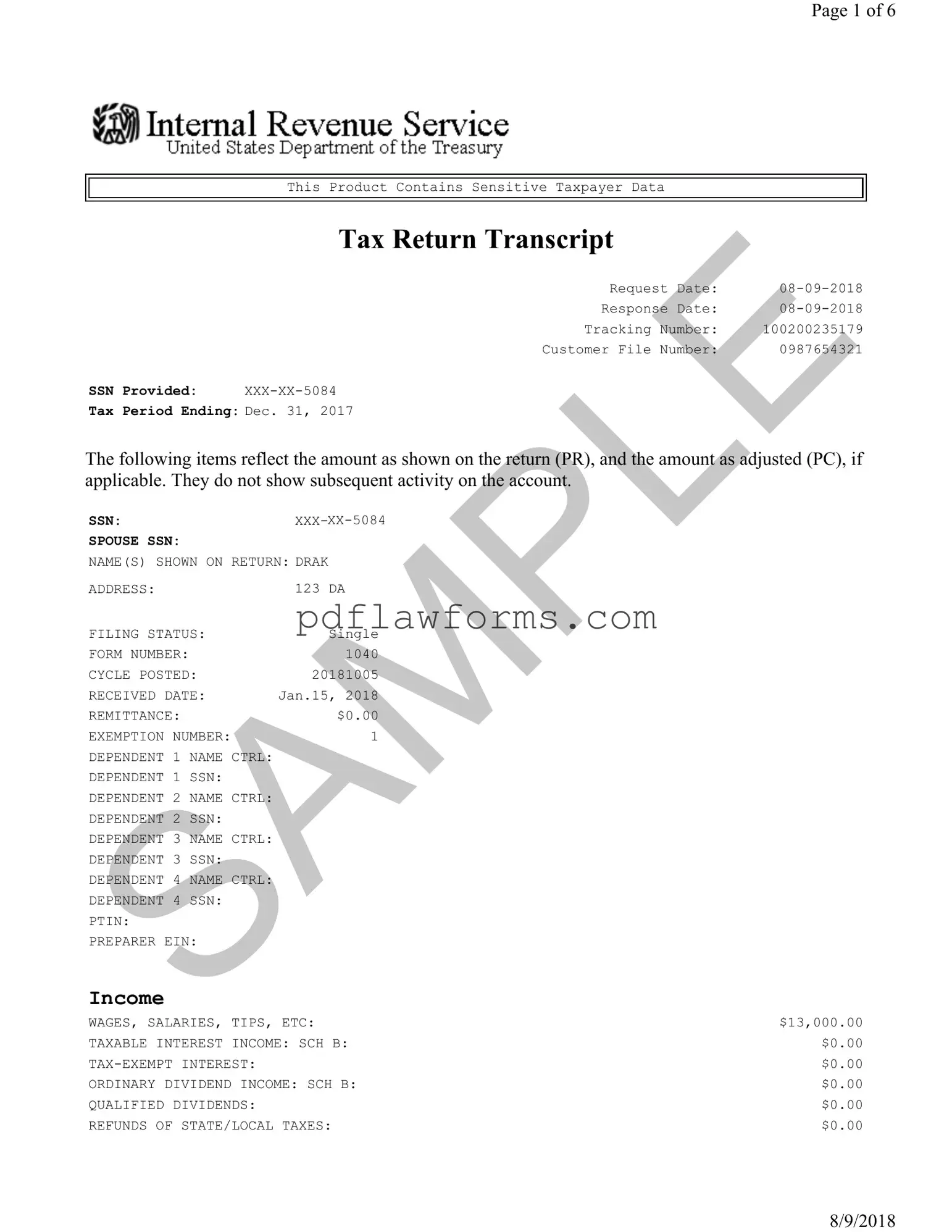Fill Your Sample Tax Return Transcript Template
A Sample Tax Return Transcript is an official document that summarizes key information from your tax return. It provides a snapshot of your income, deductions, and tax credits as reported to the IRS. Understanding this form can be essential for various financial tasks, such as applying for loans or verifying income.
If you need to fill out the Sample Tax Return Transcript form, click the button below to get started.
Make My Document Online
